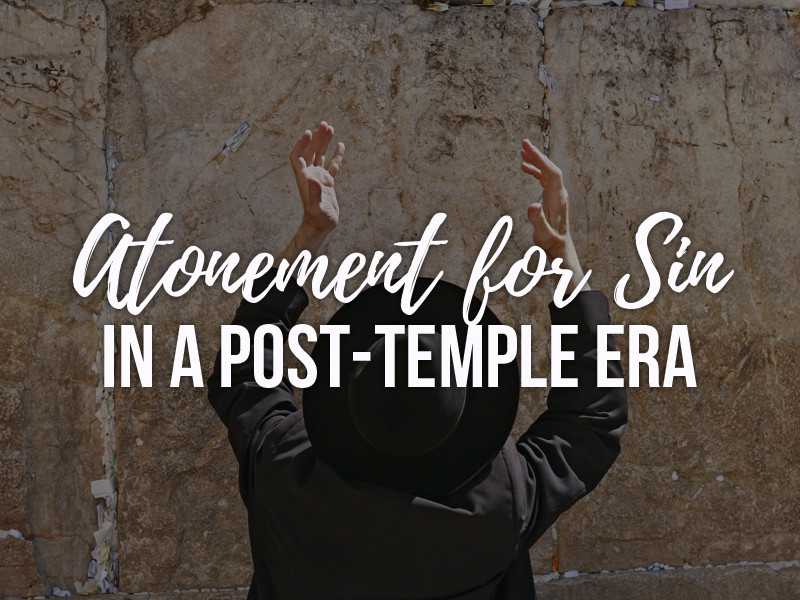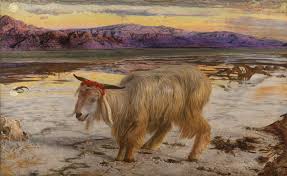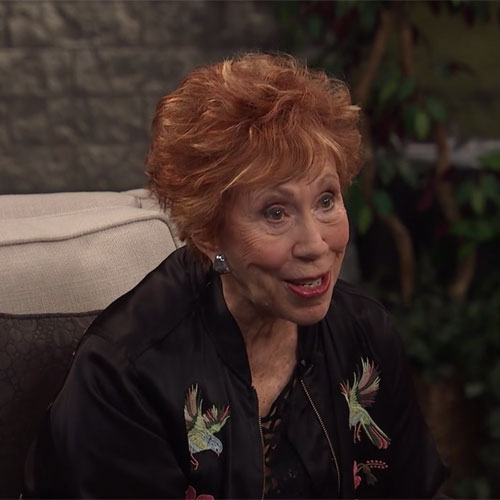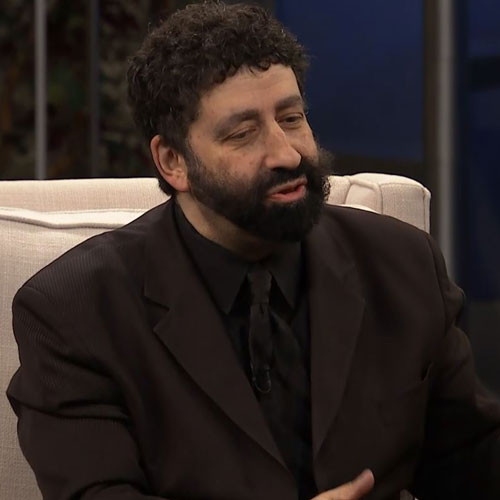Jewish Voice Today Q4 2017



Yom Kippur (YOM kih-POUR), or the Day of Atonement, is the holiest day of the Jewish year. It is the day when, in Israel’s history, the entire year’s sins were forgiven and removed making the way for reconciliation with the holy God.
The Hebrew Scriptures provide instructions for the Day of Atonement in Leviticus chapters 16 and 23 as well as Numbers chapter 29.
Most of the priest’s duties for the day centered on the Temple where he offered sacrifices, burned incense and, on this one day alone each year, brought the blood of sacrifices into the Holy of Holies before the very presence of God.

He also ceremoniously laid – via confession – all Israel’s sin on the head of a male goat chosen by lots. This scapegoat – which is the origin of the term we know – was then led outside the camp into the wilderness, signifying the removal of sin from the people.
For nearly 2,000 years, fully observing the Day of Atonement according to God’s instructions in the Torah has been impossible.
That’s because in 70 A.D., the Second Temple was destroyed. How do God’s chosen people observe the Day of Atonement without a Temple? Without the sacrifices and sprinkling of blood? Over time, Jewish rabbis and sages developed new rituals to retain the meaning and holiness of Yom Kippur.
Today, the focus remains on man’s need of atonement for sin. Jewish tradition teaches that, in the post-Temple age, Jewish people find atonement through confession, repentance and prayer to God and reconciliation among individuals. According to the Rabbis, Yom Kippur is a day when God seals a person’s destiny for the coming year. According to this teaching, on Rosh Hashanah, He decrees His judgment, and people have the opportunity during the following 10 Days of Awe to affect that proclamation before God seals it on the Day of Atonement.
Jewish people observe the holy day according to the Scriptures as they can without the Temple. God set apart this day as one in which to “afflict one’s soul” (Leviticus 16:29), so Jewish people fast from food, drink and various other pleasures and comforts for the 25 hours from just before sunset to just after sunset of Yom Kippur. God also declared it a complete Sabbath rest (Leviticus 16:31), and no work is done. The day is traditionally spent in synagogue where congregational worship includes Torah readings and special prayers and liturgy.
The Holy of Holies was the innermost part of the Temple. It was the place where God’s presence dwelled and where only one man could enter once a year by following detailed instructions. The moment Yeshua (Jesus) died on a tree, some 30 years before the Second Temple’s destruction, the veil in front of the Holy of Holies was torn in two. It was not split from the bottom up as a man might do. It was ripped from above, from top to bottom – as God would do. Why?
The New Covenant explains that Yeshua made complete atonement for us, and now, in likeness to the Temple in Jerusalem, Believers have the Spirit of the Lord dwelling in us.
“Don’t you know that you are God’s temple and that the Ruach Elohim (Spirit of God) dwells among you?” (1 Corinthians 3:16).
“…for God’s temple is holy, and you are that temple” (1 Corinthians 3:17).
With Yeshua’s death, the ultimate atoning sacrifice for sin was made. Yeshua did not have to make atonement for Himself first when He went into the heavenly Holy of Holies, and He brought His own blood before the Mercy Seat. He is the perfect High Priest, intervening and mediating on our behalf to reconcile us to God for eternity. He offered Himself up once for all.
“He has no need to offer up sacrifices day by day like those other [high priests] – first for their own sins and then for the sins of the people. For when He offered up Himself, He did this once for all” (Hebrews 7:27).
“But when Messiah appeared as Kohen Gadol [High Priest] … He entered into the Holies once for all – not by the blood of goats and calves but by His own blood, having obtained eternal redemption” (Hebrews 9:11-12).
“When this One offered for all time a single sacrifice for sins, He sat down at the right hand of God – waiting from then on, until His enemies are made a footstool for His feet. For by one offering, He has perfected forever those being made holy” (Hebrews 10:12-14).
The veil was torn in two because ultimate atonement is now available through Yeshua for those who call upon Him.
Yom Kippur also bears a prophetic significance. Each of the biblical Feasts, God’s appointed times or moedim (mo-eh-DEEM), foreshadow God’s redemptive plan. The Spring Feasts have been fulfilled in Yeshua’s First Coming. Passover, Firstfruits and Shavuot point to His death, resurrection and the giving of the Holy Spirit. The Fall Feasts of Rosh Hashanah, Yom Kippur and Sukkot will be fulfilled with His Second Coming. When Yeshua returns, Israel will recognize Him as their King, and all the nations will acknowledge Him as King of kings and Lord of lords – the provider of and provision for atonement.
Discover the meaning and wonder of Rosh Hashanah, Yom Kippur, and Sukkot with this specially designed infographic.

I’m writing to tell you about an ambitious project to document every word in the Hebrew language. It marks the next step in the miraculous revival of a language once believed by some to be dead.
Hebrew as a spoken language began to fade after Jewish people were scattered around the world through various exiles and other events. For many centuries, Hebrew was used only in its written form.
In the late 19th century, reviving spoken Hebrew became a vital part of the Zionist movement as Jews began to resettle in the land of their ancestors. When Eliezer Ben Yehuda, known as the father of modern Hebrew, successfully brought the spoken language back to life, it was considered a remarkable achievement.
Not only was that revival successful, Hebrew is now the official language of Israel. This is considered the only example in history of such a dramatic revival of a language.
There’s no question about the nature of this linguistic revival in the mind of Gabriel Birnbaum, Senior Researcher for the Historical Dictionary Project at Israel’s Academy of the Hebrew Language.
“It’s a miracle,” says Birnbaum, who moved to Israel from Hungary when he was 6 years old.
As reported in the Times of Israel, Birnbaum is part of a team working in Jerusalem on a project to document and define every Hebrew word ever used – from ancient texts such as the Dead Sea Scrolls to the works of contemporary Israeli writers.
Although the undertaking first started in 1959, it’s far from complete.
Essentially, the task is to create an exhaustive historical dictionary of the Hebrew language, comparable to the monumental Oxford English Dictionary.
Birnbaum says that he and his fellow researchers “understand that we do something very important for the Jewish people.”
But Hebrew’s unique history and the fact that it was revived after 1,700 years gives this project added importance, “for linguistics in general, also, because it’s a huge linguistic project in itself,” said Birnbaum.
The researchers seek to comprehensively include all of the few available works of ancient literature. For later eras, where many examples exist, only representative samples are chosen.
Ben-Yehuda, who died in 1922, began work on the first modern Hebrew dictionary. Today, 25 people work to complete the project he started.
Some 50,000 entries are already included along with linguistic analysis, and definitions began to be written in 2005 – a major milestone.
“I don’t think anybody would even venture [a guess as to] how many years” it will take to complete it, the project’s Associate Editor, Steven Fassberg, told the Times.
Birnbaum seems undaunted by the size of the task. He points out a plaque, which once hung above Yehuda’s desk, quoting a traditional Jewish teaching: “The day is short and the task is great.”
In a similar way, as I consider the task we have been called to by God, it might easily be overwhelming. But your faithful prayers and support sustain us. As we stand together for Israel and the Jewish people, you are a great encouragement to me and the entire team at Jewish Voice Ministries.
As you know, this ministry has been called to bless Israel through bringing humanitarian aid and the love of Yeshua (Jesus) to Jewish people throughout the world. Your support helps us accomplish this, and we are so grateful.
Please consider a gift of support today. Give now to reach Jewish people around the world with help, healing and the Good News of the Messiah of Israel. Your partnership will carry forward this work in the name of Yeshua.
To show our appreciation for your gift of $35 or more today, we’ll send you two special Hebrew gifts. The Hebrew Trainer software package teaches you how to speak the holy language of Hebrew. The Ancient Alphabet Chart compares ancient and modern Hebrew alphabets for a historical glimpse at the language throughout the ages.
Again, thank you for choosing to partner with us. Your support is changing lives around the world.

A Good and Sweet New Year to You!
The Jewish New Year, or Rosh Hashanah, invites reflection and expectation as we consider the previous year and look ahead to the next.
As we welcome the year 5778, we rejoice with you in the greatest gifts ever given: eternal life through Yeshua HaMashiach – Jesus the Jewish Messiah – and confidence of being sealed in the Lamb’s book of life!
May you have a blessed holiday and New Year.
Praying you will have a sweet New Year
Filled with
His delightful presence,
comforting shalom
and joyful love!
Discover the meaning and wonder of Rosh Hashanah, Yom Kippur, and Sukkot with this specially designed infographic.
Rosh Hashanah – the Jewish New Year – is a time of reflection and expectation. Just as when January 1 approaches, Rosh Hashanah draws Messianic Jews as well as all Jewish people to look back on the previous 12 months and gaze ahead to the unfolding new year.
When we reflect, we think quietly, ponder, consider, mull over, observe, study, examine and contemplate.
Rosh Hashanah means “head of the year” in Hebrew, and Jewish tradition teaches that at this time, God decrees a judgment on the life of individuals for the coming year. Ten days later, at Yom Kippur, He seals that judgment. Therefore, Rosh Hashanah, along with the preceding month of Elul, form a season of contemplation and repentance to ensure right standing with God. The focus on self-examination and making amends heightens during the 10 Days of Awe immediately preceding Yom Kippur.
Messianic Jews and other Believers are reconciled to God through faith in Yeshua (Jesus), the Messiah God sent to make complete atonement for our sin. His death on the executioner’s stake was a once-for-all sacrifice. In receiving this incredible gift, Believers are assured that their standing with God is secured eternally, and there is no need for annual reconciliation to determine our fate for the coming year.
Reflection should be a significant part of any Believer’s life. But annual events often extend a clear invitation to take stock of one’s life. Birthdays, anniversaries and the New Year beckon us to examine who we are and how we live.
As the Jewish calendar turns the page to the year 5778, Rosh Hashanah provides a natural opportunity to consider our growth, mistakes, goals, desires and dreams. Why not take some time to contemplate the past year and ponder the coming one? Start by asking yourself some questions and praying that God will help you hear His answers.
In the past 12 months, how have you grown spiritually? Are you more patient, positive, thankful or has your trust in God increased? Thank Him for those areas of growth.
What about the ways you’ve disappointed yourself? Take those to Him as well, and receive His forgiveness as you stand on the biblical truth that God knows your every weakness, loves you completely and truly delights in you as His child.
How would you like to grow in the year ahead? What negative habits – whether physical or spiritual – would you like to break? What new habits would you like to form? Do you have specific goals? Would you like to pursue a volunteer opportunity, share your testimony with your congregation, talk about Yeshua with someone you know, or learn a new skill?
Ask God what he wants to teach you in the next 12 months. Ask Him to speak to you through His unchanging Word and His Spirit.
And then listen.
Remember that your time with God doesn’t have to be all in one sitting. Your reflection can come in multiple prayer sessions, quiet times, and even in spare moments in your days. But do set aside some time to give Him your undivided attention.
And when you hear His voice beckoning you to new heights and delights in your spiritual walk with Him, rejoice that He loves you so much that He is always working within you to perfect and complete you so that you may more fully enjoy His abundant life.
Discover the meaning and wonder of Rosh Hashanah, Yom Kippur, and Sukkot with this specially designed infographic.

It’s almost New Years – on the Jewish calendar, that is.
The Hebrew name for the Jewish New Year is Rosh Hashanah (Roshe Hah-SHAH-nah). At sunset on September 20, Jewish people, including Messianic Jews, the world over will welcome a new year.
Rosh Hashanah means “head of the year” in Hebrew and occurs on the first day of the Jewish month of Tishri, which falls in September or October on the Gregorian calendar. It is observed and associated with the biblical Feast of Trumpets, or Yom Teruah (YOHM Tare-OO-ah).
The books of Leviticus and Numbers describe the Feast of Trumpets with brief instructions: a Sabbath rest, blowing the shofar (SHOW-far), a holy assembly and various offerings.
The Feast of Trumpets takes place in the seventh month, but why do Messianic Jews celebrate the New Year at the same time?
Jewish tradition teaches that God created the earth on the same date as the Feast of Trumpets. Therefore, Rosh Hashanah is observed at the same time. The Jewish calendar counts from Creation, and this Rosh Hashanah we will enter the year 5778.
Rosh Hashanah – just 10 days before the Day of Atonement, called Yom Kippur (YOHM Kip-POUR) in Hebrew – ushers in the High Holy Days of the Jewish year. It is a time to reflect on the previous year and look ahead to the one to come.
The Rabbis teach that at Rosh Hashanah, God pronounces a judgment for the coming year upon each of His people. At Yom Kippur, He seals that judgment. Therefore, during the month of Elul (Eh-LOOL) preceding Rosh Hashanah, Jewish people begin to examine themselves before God and seek His forgiveness and favor for the following year.
The 10 days between Rosh Hashanah and Yom Kippur are known as the Days of Awe when Jewish people intensify their reflection and focus on repentance and making amends with others. They believe that during this time God may yet alter what was to be an unfavorable decree and grant them a good new year.
As Messianic Jews, we know that God has sealed us with His blessing and favor for eternity through the Messiah. Ephesians 1:13 says, “After you heard the message of truth – the Good News of your salvation – and when you put your trust in Him, you were sealed with the promised Ruach HaKodesh [ROO-akh Ha-koh-DESH].”
However, there is always room for reflection. It is beneficial to examine ourselves before the Lord, asking Him to search our hearts and bring us to repentance for wrongdoing. Rosh Hashanah provides a special time to focus in this way.
We freely reflect on our lives and seek to honor God more completely in the coming year than we did during the previous one. We rejoice over the prospect of another year to grow closer in fellowship with God and bring more honor to Him in our lives.
One of the most amazing things about the Feasts that God instituted for the people of Israel is that each contains a prophetic element foreshadowing one aspect of His redemptive plan. The Spring Feasts include Passover, Firstfruits and Shavuot, which point respectively to Yeshua’s sacrificial death, resurrection, and the giving of the Holy Spirit. And each occurred on the exact date of its respective Festival.
The Fall Feasts correlate to events of the End Times and have yet to be fulfilled. Many people believe that Yeshua will return for His people on the Feast of Trumpets.
Only time will tell, but as the world bears increasing evidence that we are in the Last Days, we remember Yeshua’s words advising us that:
we are to remain busy with His kingdom work until He comes (Luke 19:11-26), and
as we see the signs of the Last Days, we are to stand up and lift up our heads because our redemption draws near (Luke 21:28)
May God grant you a joyous new year!
Discover the meaning and wonder of Rosh Hashanah, Yom Kippur, and Sukkot with this specially designed infographic.
